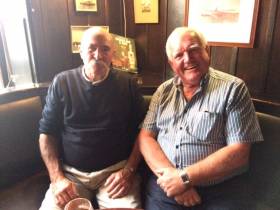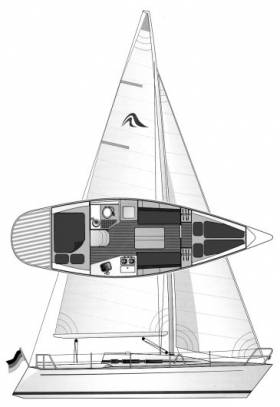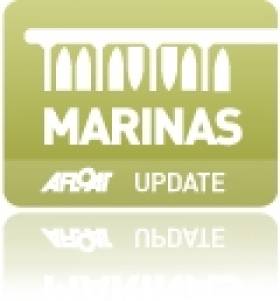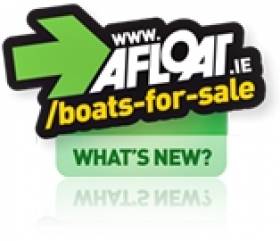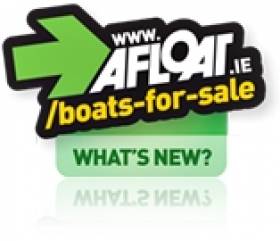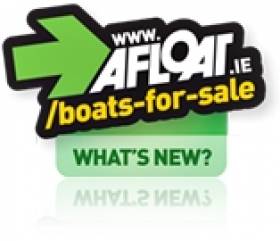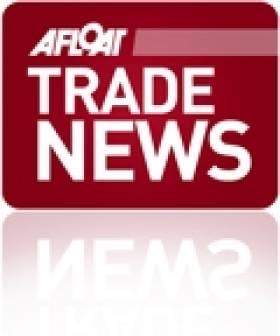Displaying items by tag: Crosshaven Boatyard
Crosshaven Shipwright Willie Lee Retires After Fifty Years
A very pleasant nostalgia-laden party in The Oar pub in Crosshaven on Friday night honoured shipwright Willie Lee, who was retiring after fifty years with Crosshaven Boatyard writes W M Nixon. In addition to colleagues past and present, the attendance included former boatyard MD Wally Morrissey, and satisfied customers such as Darryl Hughes, who is delighted with the work Willie has done on his classic 1937 ketch Maybird, and managed to get us some photos of this historic event
They had much to remember and celebrate, and some very famous boats to recall. One of the best, though she no longer sails the seas, was Francis Chichester’s Gipsy Moth V, a very special ketch on which Willie worked in 1970.
After his epic round the world voyage with the temperamental Gipsy Moth IV in 1968 - a boat which was a “committee product” if ever there was one - Chichester recalled that he had been happiest with boats designed by Robert Clark and built in Ireland, so he decided to reactivate both connections. By this time, Robert Clark was doing work for Denis Doyle of Cork, whose many interests included Crosshaven Boatyard, so all the signs pointed there.
 The Robert Clark-designed Gipsy Moth V shortly after her launching in Crosshaven in 1970. Photo: W M Nixon
The Robert Clark-designed Gipsy Moth V shortly after her launching in Crosshaven in 1970. Photo: W M Nixon
The upshot of this was that in 1969-70, the special ketch Gipsy Moth V was built in the yard to Robert Clark’s design. Chichester was well pleased with her, as she was good-mannered and fast, enabling him to establish his objective of setting a record time for sailing between West Africa and South America.
He kept the Crosshaven-built boat until his death, when she was bought by another long-distance solo sailor who was grabbing some much-needed sleep when approaching Sydney in Australia during a round the world race, and an unfortunate change of wind caused Gipsy Moth V to alter course and come ashore in a rock cleft to become a total wreck, a much-regretted loss.
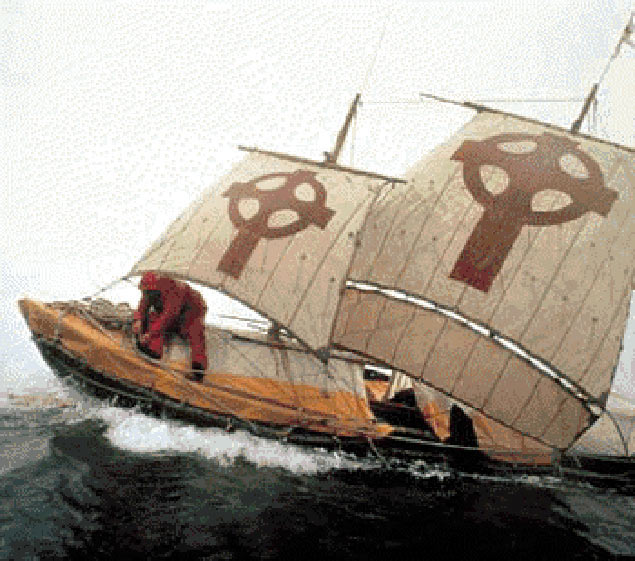 The Crosshaven-built 36ft sailing currach St Brendan succeeded in the east-west Atlantic crossing in 1976-77
The Crosshaven-built 36ft sailing currach St Brendan succeeded in the east-west Atlantic crossing in 1976-77
Meanwhile, Willie Lee and his colleagues beck in Crosshaven were to complete many other boat-building projects, the most unusual being the giant sailing currach St Brendan for explorer/adventurer Tim Severin. As this special craft was skinned with oxhide, a corner of Crosshaven smelled like a tannery – “stank” might be the better word – for some time. But in 1976-77, the St Brendan achieved the Transatlantic voyage by the northern route to prove that Ireland’s pioneering voyaging saints would have had the boats and capacity to do it as the legends would have it, and the vessel is now happily preserved in the Craggaunowen Heritage Park in south County Clare.
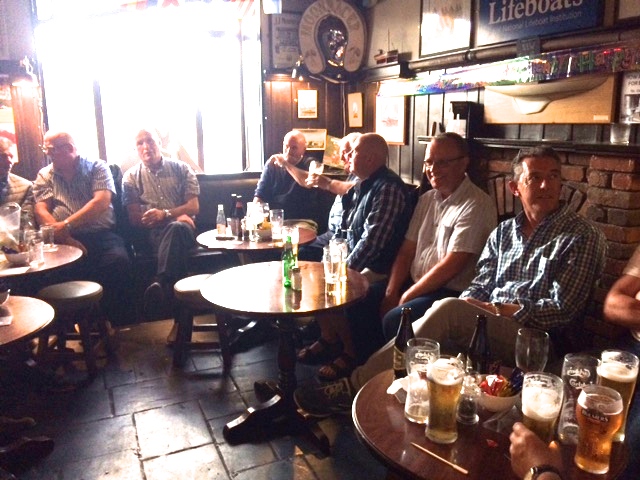 A time for memories, a time to honour traditional skills. Willie Lee’s retirement party in The Oar pub in Crosshaven. Photo: Darryl Hughes
A time for memories, a time to honour traditional skills. Willie Lee’s retirement party in The Oar pub in Crosshaven. Photo: Darryl Hughes
For the Irish sailing community, the most important boat on which Willie Lee worked was the wonderful Moonduster in 1981, the Frers 51 which Denis Doyle himself owned until his death in 2001, when she was sold away from Cork. For those twenty marvellous years, Moonduster was Ireland’s flagship, a great credit to everyone involved with her, both the builders and those who sailed her - all of whom will wish Willie Lee the very best in his well-earned retirement.
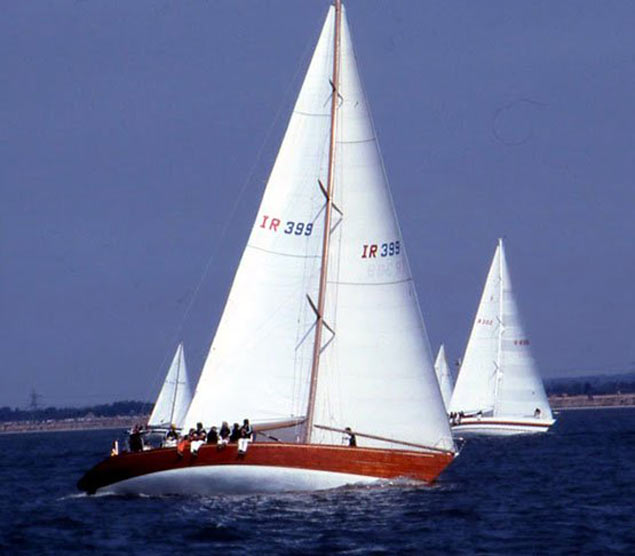 The marvellous Moonduster – Willie Lee was one of those who built her in 1980-81
The marvellous Moonduster – Willie Lee was one of those who built her in 1980-81
Hanse 301 Yacht For Sale Provides a Welcome Sense of Proportion
We all have mixed feelings about very beamy boats writes W M Nixon. They can certainly provide a significant amount of extra space, but whether or not that actually improves the accommodation depends entirely on how it has been utilised. Some interior designers seem to think that space is a good thing in its own right. Yet in a cruising boat, we need useful room, not space for space’s sake.
And of course we all know only too well that an excessively beamy boat really needs twin rudders to have any sort of manners in tricky conditions involving a marked angle of heel. Happily, twin rudders are becoming more frequently used these days. But there was a whole generation of increasingly beamy boats which had to make do with single rudders, and in squally weather when heeled, they’d often turn round and look at you……. So when Hanse Yachts from Germany started making their impact on the international scene after being founded in 1990, they were like a breath of fresh air. They seemed able to combine very satisfactory accommodation without being excessively beamy. And they were a delight to sail.
This Hanse 301from 2002 well represents the firm’s design philosophy. Sailors from a good while back will find it interesting that a 30ft boat with 9.12ft beam can be described as “elegantly slim”. Yet by comparison with many of today’s wide boats, that’s what she is. But a quick look at the accommodation shows that she has all you could reasonably require, though the athwartships double bunk down aft is a novel feature. With her relatively slim hull she is easily driven, but even at the time she appeared, many felt the standard Volvo MD diesel of just 10hp was a bit on the light side. However, this boat has the larger option of the MD 2020, giving 19hp, which makes sense.
Another attractive feature is the self-tacking jib on the nicely proportioned fractional rig. The sense of freedom which this imparts when sailing has to be experienced to be believed. In all, the Hanse 301 is a very attractive package, and she’s for sale on Cork Harbour through Crosshaven Boatyard at €28,500. Full advert here.
Quicksilver 700 Weekend For Sale, Sleeps Five with a Squeeze
Crosshaven Boatyard are offering a low engine hours Quicksilver 700 Weekend motroboat for sale . The 150HP Volkswagen diesel engine has low engine hours of 650 approximately. She also comes equipped with a 2015 bow thruster, 2015 cooker, colour chart plotter, VHF, marine toilet and more. She can sleep five with a squeeze and has been well looked after. Viewing recommended says the Cork broker. More details on Afloat boats for sale here.
Dufour Yachts Launch New Sailing School Day Boat Design
Irish yacht broker Crosshaven Boatyard in County Cork has announced the development of a a seven metre day boat with shallow draft keel, intended for sailing schools as well as sport sailing. The brand new Dufour Drakkar 24 is designed by Umberto Felci and will be unveiled at the French Grand Pavois, Boat Show in La Rochelle next week.
Crosshaven Boatyard Marina. Yacht & Boat Berths & Storage in Cork
Crosshaven Boatyard is one of three marinas in Crosshaven. The boatyard was founded in 1950 and originally made its name from the construction of some of the most world-renowned yachts, including Gypsy Moth and Denis Doyle's Moonduster. Nowadays, however, the yard has diversified to provide a wide range of services to both the marine leisure and professional industries. Situated on a safe and sheltered river only 12 miles from Cork City Centre, the marina boasts 100 fully-serviced berths along with the capacity to accomodate yachts up to 35m LOA with a 4m draught. Crosshaven Boatyard Marina is ideally situated for cruising the stunning south west of Ireland.
Crosshaven Boatyard Marina, Crosshaven, Co. Cork
Tel: 00353 214 831161 Fax: 00353 214 831603
Email: [email protected]
VHF: Ch M
Access: H24
#boatsforsale– Crosshaven boatyard has just reduced the price of a 1982 Beneteau First 32 on its books from €25,900 to €19,900 which broker Hugh Mockler says reflects 'excellent value'. Full details of the yacht are on the boats for sale site. The yard also says the boat has been well looked after. She comes with a 28HP Volvo diesel engine. Loads of sails including furling genoa and pretty much ready to go afloat. Full advert here.
Elan 340 for Sale (That Can Pay Her Running Costs!)
#BOATS FOR SALE – A 'highly spec'd and well maintained' 2007 Elan 340 has just come on the market. According to the broker Crosshaven Boatyard in Cork 'the yacht has the unique advantage of earning an income for her new owners'.
Priced at €73,500 ex VAT, this hi-tech designed performance cruiser has been used as a sail training and charter yacht with Kinsale's Sovereign Sailing. James Lyons from Sovereign Sailing told Afloat.ie "The Elan is a perfect fit for our fleet as she is licensed by the DOT for skippered and bareboat charter. The concept of our management fleet is the that owners use the boat as much as they wish and we use it for around 6-8 weeks a year which covers all her annual expenses".
She can be viewed through Hugh Mockler of Crosshaven Boat Yard. The full advert giving detailed specs is on the Afloat Boats for Sale site HERE.
Further Price Reduction on 2006 Dufour 385
#BOATS FOR SALE – A 'lightly used' Dufour 385 built in 2006 has been further reduced by €15,500 and is now available at €99,000. The family cruiser is described online as 'solid and well equipped'. The yacht, which can be seen at Crosshaven boatyard, Cork comes with an upgraded engine (40HP Volvo). The yacht has twin wheels and an In-mast furling mainsail. The full advert giving detailed specs is on the Afloat Boats for Sale site.
Crosshaven Boatyard Appointed Seaward Agents
Crosshaven Boatyard Co. Ltd have recently signed a 'Representation Agreement' with top of the range motor boat builders Seaward Marine of Cowes on the Isle of Wight.
The Cork yard will act as Seaward Marine Ltd's exclusive representative for the promotion and marketing of their range of pleasure craft in Ireland.
Seaward Marine Ltd have a modern facility in Cowes and they are world renowned for their comprehensive range of Nelson motor yachts. Over the past 25 years TT Boat Designs, the Nelson designers, have produced a range of safe all-weather sea keeping craft. The luxury fit-out provided the all-important niche and reputation for Seaward craft that has continued to date.
The current range consists of the Seaward 23, 25 and 29, the Seaward 35 Cockpit and Aft-deck versions and the magnificent Nelson 42. All craft are semi-custom fitted and are offered with a choice of propulsion to suit every need.
For further information please contact Hugh Mockler or Donal McClement at Crosshaven Boatyard Co. Ltd,


























